Water Quality

What is the significance of green infrastructure in managing urban runoff and improving water quality ?
Green infrastructure (GI) is a sustainable approach that uses natural processes to manage stormwater, reduce pollution, and enhance the overall health of urban ecosystems. It plays a crucial role in managing urban runoff and improving water quality. Some benefits of GI include reducing stormwater runoff, improving water quality, enhancing habitat and biodiversity, and mitigating climate change impacts. To effectively implement green infrastructure in urban areas, factors such as site selection, design considerations, and maintenance and management should be considered. Proper maintenance and management are essential for ensuring the long-term success of green infrastructure projects. By implementing effective green infrastructure practices, cities can create healthier, more resilient environments for both people and wildlife.

How does climate change affect the quality and availability of drinking water ?
This article discusses the various ways in which climate change affects the quality and availability of drinking water, including changes in precipitation patterns, melting glaciers, sea level rise, temperature increase, extreme weather events, and wildfires. It also explores adaptation strategies such as water conservation measures, infrastructure improvements, protection of water sources, and policy and regulation to mitigate these risks and ensure a sustainable water future for all.

How can urban green spaces improve residents' quality of life ?
Urban green spaces, including parks and community gardens, play a key role in enhancing the quality of life for city residents by providing physical, mental, social, and environmental benefits. Physical health is improved through increased physical activity, better air quality, and mitigation of the heat island effect. Mental health benefits include stress reduction, enhanced mood, and improved cognitive function. Social well-being is boosted through community building, recreational opportunities, and educational value. Environmentally, urban green spaces contribute to biodiversity conservation, water management, and carbon sequestration. These areas are essential for comprehensive wellness in urban environments and should be a focus in future city planning.

How do weather conditions affect air quality ?
Weather conditions significantly affect air quality by influencing the dispersion, accumulation, and transformation of pollutants. High temperatures can increase ozone levels, while low temperatures can trap pollutants near the ground. Wind helps disperse pollutants, improving air quality, but calms can lead to pollutant buildup. Precipitation, like rain and snow, can wash pollutants from the air. High humidity promotes ozone formation but aids in particle removal, whereas low humidity inhibits some pollutants and suspends dust. Temperature inversions trap pollutants, degrading air quality, while cold fronts and storms can clean the air through winds and precipitation.

How is climate change affecting global water resources ?
The impacts of climate change on global water resources include reduced availability due to melting snowpack and glaciers, more frequent droughts and floods, saltwater intrusion into coastal aquifers, and changes in runoff patterns. Water quality is also affected by warmer water temperatures leading to harmful algal blooms, acid rain from increased carbon dioxide levels, pollutant transport from heavy rainfall events, and eutrophication from nutrient loading. The distribution of water resources is impacted by increased water stress in arid regions, migration and displacement of people seeking reliable water sources, strain on infrastructure from extreme weather events, and disruption of aquatic ecosystems due to altered flow regimes. Addressing these challenges requires both mitigation efforts to reduce greenhouse gas emissions and adaptation measures to build resilience against the impacts of climate change on water resources.

How can we balance economic development and water resource protection ?
Water resources are crucial for economic development but must be protected to ensure sustainability. Strategies for balancing these goals include prioritizing sustainable practices, implementing regulatory measures, fostering collaboration and partnerships, investing in infrastructure and technology, and educating and creating awareness. By adopting these approaches, we can achieve a balance between economic growth and water conservation, ensuring long-term sustainability for all.

What role do technology and innovation play in water resource management ?
Water resource management is a critical aspect of modern society, and technology and innovation play a crucial role in improving the efficiency and effectiveness of this process. Technology and innovation have made it easier to collect and analyze data on water quality, quantity, and usage patterns. This information can be used to identify trends and make informed decisions about how to manage water resources more effectively. Technology and innovation also play a significant role in promoting efficient water use, water quality management, and climate change adaptation. By using advanced irrigation systems, smart meters, and other technologies, water providers can reduce waste and ensure that water is used only where it is needed. Technologies such as ultraviolet disinfection, reverse osmosis, and membrane bioreactors can remove contaminants from water more effectively than traditional methods. New construction techniques and materials can make water infrastructure more resistant to extreme weather events like floods and droughts.

What are the most common pollutants measured in air quality monitoring ?
Air quality monitoring is crucial for identifying pollutants that can harm human health and the environment. The most common pollutants measured include particulate matter, nitrogen oxides, sulfur dioxide, carbon monoxide, ozone, and volatile organic compounds. These pollutants can cause respiratory problems, contribute to smog and acid rain, and have negative impacts on crops and vegetation. By tracking these pollutants, governments and organizations can take steps to reduce their emissions and improve air quality.

How can climate services be used to manage water resources effectively ?
Climate services play a critical role in water resources management by providing accurate and timely information on weather patterns, climate change, and related phenomena. These services can be used to forecast precipitation, monitor river levels for flood early warning systems, assess the impact of climate change on water availability, plan adaptation measures, monitor drought conditions, manage water quality, and protect ecosystems. By leveraging these services, we can ensure the effective use of water resources, adapt to changing climates, prepare for extreme weather events, and guarantee a sustainable water supply for future generations.

How does deforestation contribute to water cycle disruption ?
Deforestation contributes to water cycle disruption through soil erosion, surface runoff, and groundwater depletion. This leads to droughts, flooding, pollution, water scarcity, and climate change. Sustainable forest management is crucial to mitigate these effects.
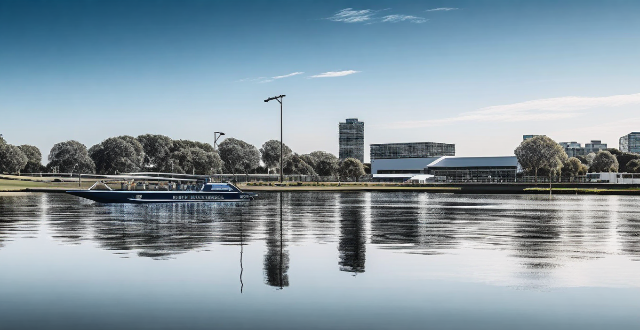
How do climate adaptation policies integrate water resource management ?
Climate adaptation policies play a crucial role in water resource management by assessing climate change impacts, developing adaptation strategies, implementing and monitoring measures, securing finance and investment, and promoting education and awareness. These efforts aim to reduce vulnerabilities of human and natural systems to climate change, focusing on risks such as temperature changes, precipitation variability, and extreme events. Adaptation strategies include water conservation, infrastructure adaptations, legal and institutional frameworks, pilot projects, monitoring and evaluation, capital investment, operational costs, public education campaigns, and capacity building. This integration ensures water security for future generations by addressing the complex interactions between climate change and water resources.
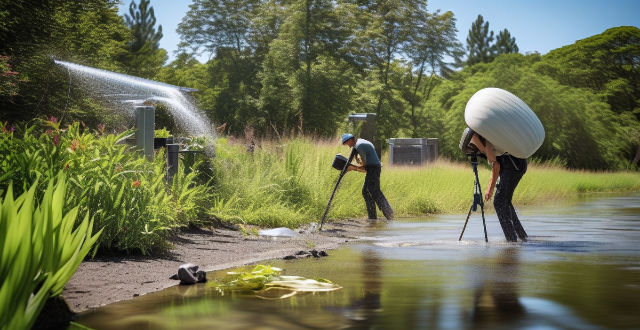
How does ecological design address issues related to water management and consumption ?
Ecological design addresses water management and consumption issues through strategies such as rainwater harvesting, water recycling, using native plants in landscaping, installing efficient water fixtures, permeable paving, smart water management systems, and promoting education on water conservation.

How does exercise affect sleep patterns and quality ?
Exercise significantly influences sleep patterns and quality. Immediate effects include increased alertness and better body temperature regulation for sleep. Long-term, regular exercise improves sleep quality and regulates sleep patterns. Different types of exercise—aerobic, anaerobic, and mindful movements like yoga—all positively affect sleep but may require varying recovery times. The timing of exercise is crucial; morning workouts set the day's tone with minimal sleep interference, while late-night exercises can hinder sleep preparation. Tailoring workout routines to individual needs optimizes rest and overall well-being.

What are the key challenges in managing water resources sustainably ?
Managing water resources sustainably is a complex task that involves various challenges, including climate change, population growth and urbanization, pollution and degradation of water bodies, overexploitation and unsustainable use, inadequate governance and policy frameworks, economic and financial constraints, social and cultural factors, technological limitations, ecological considerations, and international water sharing. Addressing these challenges requires a combination of technological innovation, policy reform, public education, and international cooperation. Sustainable water management is not only about ensuring enough water for current needs but also about preserving this vital resource for future generations.

What role do wetlands play in water purification and flood control ?
In summary, wetlands are crucial ecosystems that play a vital role in water purification and flood control. They act as natural filters, removing sediments, nutrients, and pollutants from water while also providing buffering capacity for floodwaters. By preserving and restoring wetlands, we can ensure clean water resources and minimize the risks associated with flooding.

How effective are large-scale water transfer projects in alleviating water scarcity ?
Water scarcity is a global issue, and large-scale water transfer projects aim to alleviate it by transporting water from areas with abundant resources to those with scarce ones. These projects can increase water availability, diversify water sources, and provide environmental benefits such as restoring depleted aquifers and wetlands. However, they also face challenges like high costs, negative environmental impacts, and social and political issues. To maximize the benefits of these projects while minimizing their drawbacks, careful consideration of their potential consequences and involvement of all relevant stakeholders in the decision-making process are essential.
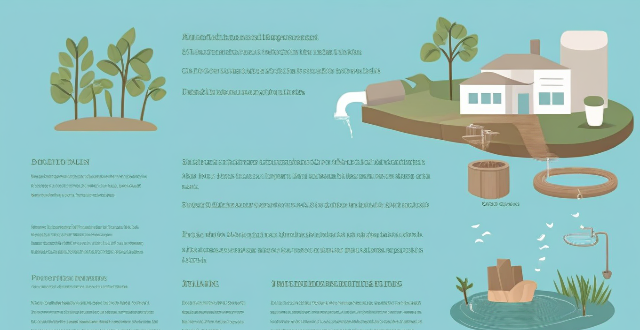
How can we improve water resource management in our community ?
The article discusses the importance of water resource management in our community and suggests various strategies to improve it. These include raising awareness through educational campaigns, implementing water-saving measures like fixing leaks and using low-flow fixtures, upgrading infrastructure such as wastewater treatment plants, promoting sustainable practices like xeriscaping and green roofs, and fostering collaborative efforts among different stakeholders. By adopting these approaches, we can ensure the long-term availability of clean water while protecting the environment.

How does an active lifestyle affect sleep quality ?
The text discusses how an active lifestyle can positively affect sleep quality. It outlines the benefits of physical activity for sleep, such as improved sleep onset, increased deep sleep, reduced sleep disturbances, enhanced REM sleep, and better sleep efficiency. The mechanisms underlying this relationship are also explored, including thermoregulation, stress reduction, neurotransmitter regulation, circadian rhythm alignment, and muscle relaxation. Practical tips for incorporating physical activity into one's routine are provided, such as choosing appropriate activities, establishing a routine, avoiding late-night workouts, being mindful of intensity, and incorporating relaxation techniques. Overall, the text emphasizes the importance of regular exercise for improving sleep quality and suggests ways to optimize its benefits.
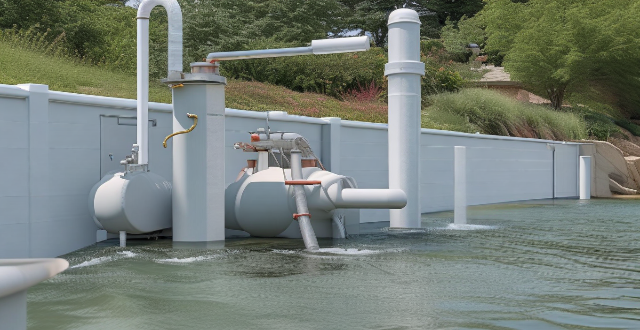
How can the energy sector reduce its water footprint through innovations in technology ?
The energy sector's substantial water consumption is a concern for sustainable development. Technological innovations, such as efficient cooling systems, advanced water treatment, renewable energy integration, smart water management, waste heat recovery, and improved desalination methods, can help reduce the sector's water footprint. These innovations offer benefits like resource conservation, cost efficiency, and reduced environmental impact, ultimately contributing to global water security.

How do I know if the discounted items at Outlet Stores are of good quality ?
Outlet stores offer discounted items, but it's important to assess their quality before buying. Check for manufacturer defects, research brand reputation, compare prices with non-discounted items, and ask about return policies.

Can meditation or mindfulness practices enhance sleep quality ?
Meditation and mindfulness practices have been gaining popularity for their potential benefits on mental and physical health, including improving sleep quality. These practices involve focusing one's attention on the present moment while calmly acknowledging and accepting one's feelings, thoughts, and bodily sensations. Meditation and mindfulness can enhance sleep quality by reducing stress and anxiety, promoting relaxation, and increasing awareness of sleep habits. To practice meditation or mindfulness for better sleep, individuals should set aside time each day, choose a comfortable environment, focus on their breath, cultivate gratitude and positive thinking, and be patient and persistent in their practice.

How do changes in precipitation patterns influence urban drainage and water management systems ?
Changes in precipitation patterns, often linked to climate change, have significant implications for urban drainage and water management systems. These alterations can lead to increased frequency and intensity of storm events, which places a strain on existing infrastructure and necessitates adaptation strategies. Key considerations include increased storm intensity and frequency, the urban heat island effect, runoff management, water quality concerns, and ecosystem impacts. Strategies for adaptation include green infrastructure, rainwater harvesting, decentralized water management, stormwater regulations, integrated water resource management, smart technology, community engagement, and sustainable drainage systems. The shifts in precipitation patterns demand a comprehensive approach to urban drainage and water management that emphasizes resiliency, sustainability, and adaptability. By integrating innovative technologies, green infrastructure, and community participation, cities can better cope with these changes and safeguard their environments and populations from the adverse effects of extreme weather events.
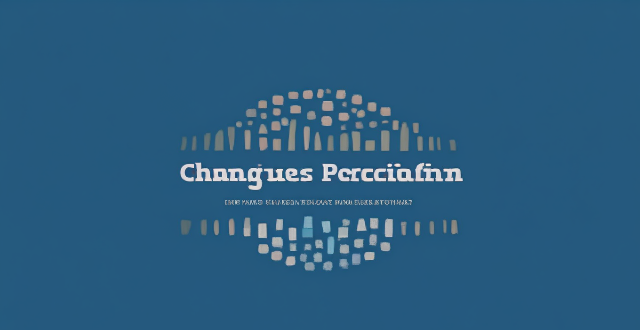
How do changing precipitation patterns influence water resources management ?
The text discusses the impact of changing precipitation patterns on water resources management, which involves the regulation and allocation of water for various uses like drinking, irrigation, industrial processes, and ecosystem maintenance. The key points include precipitation variability, water resources management, and climate change impacts. The changing precipitation patterns can lead to unpredictability in water availability, infrastructure stress, agricultural water needs, ecosystem health, urban water use, and policy and legislation changes. To cope with these impacts, mitigation measures such as reducing greenhouse gas emissions, rainwater harvesting, and water conservation practices can be implemented. Adaptation measures include flexible water allocation systems, infrastructure upgrading, integrated water resources management, and ecosystem restoration. The conclusion emphasizes the need for proactive planning, investment in resilient infrastructure, and the adoption of innovative practices that promote sustainability and flexibility in the face of an uncertain future.
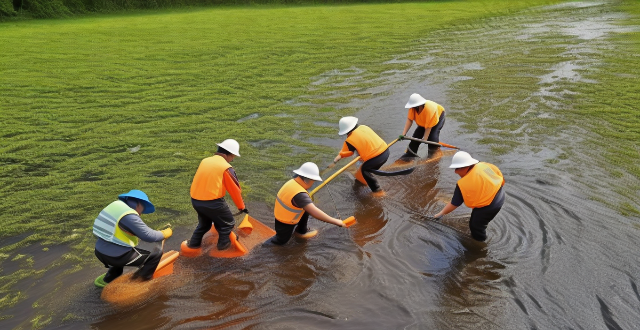
What are the most effective strategies for managing water resources during droughts ?
Effective strategies for managing water resources during droughts include rainwater harvesting, water conservation, reusing wastewater, and public awareness campaigns. Rainwater harvesting helps reduce dependence on groundwater and surface water sources, while water conservation practices such as fixing leaks and using low-flow fixtures can significantly reduce water consumption. Reusing treated wastewater for non-potable purposes also helps conserve freshwater sources. Public awareness campaigns play a crucial role in educating people about the importance of water conservation and encouraging them to adopt efficient practices and technologies. By adopting these strategies, we can minimize the impact of droughts on people, agriculture, and the environment while ensuring sustainable water management for future generations.

Are the products in sample sales of good quality ?
Sample sales are a popular way for retailers to clear out old inventory, showcase new products, and offer discounts to customers. However, the question remains: are the products in sample sales of good quality? In this article, we will explore this topic in detail. Factors affecting product quality in sample sales include the age of the product, condition of the product, quality control, and manufacturing defects. While there are pros to buying from sample sales such as discounted prices and unique finds, there are also cons such as limited selection and no returns or exchanges. To minimize risks associated with buying from sample sales, it is important to do research, inspect products carefully, ask questions, set realistic expectations, and be prepared to take risks. By following these tips, you can potentially score great deals on high-quality products from sample sales.

How does sleep quality affect athletic performance and health ?
This text explains how sleep quality affects athletic performance and overall health. It emphasizes the importance of sleep for physical recovery, mental well-being, and immune system support in athletes. Poor sleep quality can lead to decreased performance, increased injury risk, and mental health issues. The text provides tips for improving sleep quality, such as establishing a consistent sleep schedule and creating a comfortable sleep environment. Adequate sleep is crucial for optimal athletic performance and overall health.